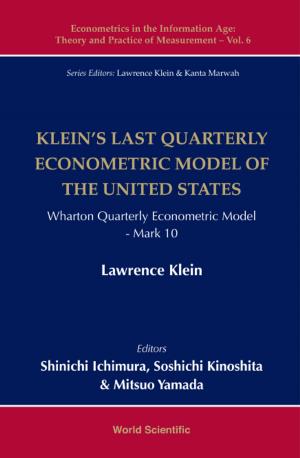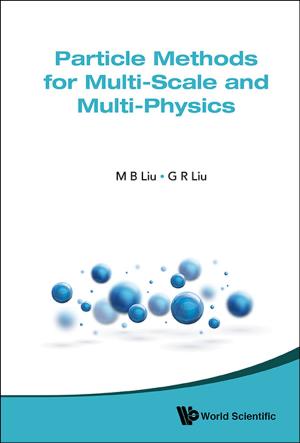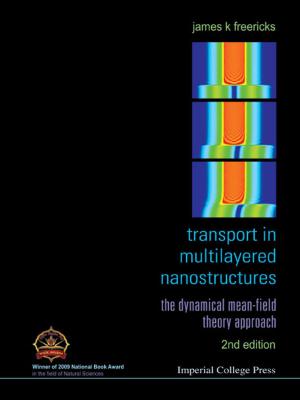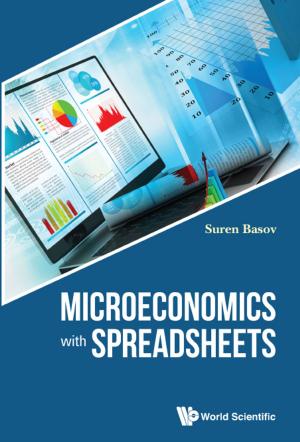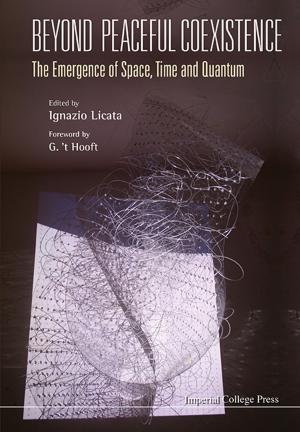Fractional Dynamics in Comb-like Structures
Nonfiction, Science & Nature, Mathematics, Probability, Science, Physics, Mathematical Physics, Statistics| Author: | Alexander Iomin, Vicenç Méndez, Werner Horsthemke | ISBN: | 9789813273450 |
| Publisher: | World Scientific Publishing Company | Publication: | August 24, 2018 |
| Imprint: | WSPC | Language: | English |
| Author: | Alexander Iomin, Vicenç Méndez, Werner Horsthemke |
| ISBN: | 9789813273450 |
| Publisher: | World Scientific Publishing Company |
| Publication: | August 24, 2018 |
| Imprint: | WSPC |
| Language: | English |
Random walks often provide the underlying mesoscopic mechanism for transport phenomena in physics, chemistry and biology. In particular, anomalous transport in branched structures has attracted considerable attention. Combs are simple caricatures of various types of natural branched structures that belong to the category of loopless graphs. The comb model was introduced to understand anomalous transport in percolation clusters. Comb-like models have been widely adopted to describe kinetic processes in various experimental applications in medical physics and biophysics, chemistry of polymers, semiconductors, and many other interdisciplinary applications.
The authors present a random walk description of the transport in specific comb geometries, ranging from simple random walks on comb structures, which provide a geometrical explanation of anomalous diffusion, to more complex types of random walks, such as non-Markovian continuous-time random walks. The simplicity of comb models allows to perform a rigorous analysis and to obtain exact analytical results for various types of random walks and reaction-transport processes.
Sample Chapter(s)
Chapter 1: A brief history and overview of methods
Contents:
-
Introduction to Methods and Techniques:
- A Brief History and Overview of Methods
- Fractional Calculus and Special Functions
- Markov Processes
-
Random Walks on Combs:
- Mesoscopic Description of Random Walks on Combs: CTRW
- Langevin Formalism
- Inhomogeneous Advection and Superdiffusion
- Ultra-slow Diffusion in 3D Cylindrical Comb
-
Reaction-Transport Processes in Combs:
- Front Propagation: Spiny Dendrites
- Front Propagation: Actin Polymerization in a Comb Micrograph
-
Extensions of the Comb Model:
- Lévy Processes on a Generalized Fractal Comb
- Quantum Comb Model
- Path Integral Description of Combs
Readership: Students and researchers in the area of random walks on comb-like structures.
Key Features:
- Unique focus on comb models
- Accessible presentation of the elements, methods, and techniques of random processes, random walks, and their application in comb models
- Quantum mechanics of comb models
Random walks often provide the underlying mesoscopic mechanism for transport phenomena in physics, chemistry and biology. In particular, anomalous transport in branched structures has attracted considerable attention. Combs are simple caricatures of various types of natural branched structures that belong to the category of loopless graphs. The comb model was introduced to understand anomalous transport in percolation clusters. Comb-like models have been widely adopted to describe kinetic processes in various experimental applications in medical physics and biophysics, chemistry of polymers, semiconductors, and many other interdisciplinary applications.
The authors present a random walk description of the transport in specific comb geometries, ranging from simple random walks on comb structures, which provide a geometrical explanation of anomalous diffusion, to more complex types of random walks, such as non-Markovian continuous-time random walks. The simplicity of comb models allows to perform a rigorous analysis and to obtain exact analytical results for various types of random walks and reaction-transport processes.
Sample Chapter(s)
Chapter 1: A brief history and overview of methods
Contents:
-
Introduction to Methods and Techniques:
- A Brief History and Overview of Methods
- Fractional Calculus and Special Functions
- Markov Processes
-
Random Walks on Combs:
- Mesoscopic Description of Random Walks on Combs: CTRW
- Langevin Formalism
- Inhomogeneous Advection and Superdiffusion
- Ultra-slow Diffusion in 3D Cylindrical Comb
-
Reaction-Transport Processes in Combs:
- Front Propagation: Spiny Dendrites
- Front Propagation: Actin Polymerization in a Comb Micrograph
-
Extensions of the Comb Model:
- Lévy Processes on a Generalized Fractal Comb
- Quantum Comb Model
- Path Integral Description of Combs
Readership: Students and researchers in the area of random walks on comb-like structures.
Key Features:
- Unique focus on comb models
- Accessible presentation of the elements, methods, and techniques of random processes, random walks, and their application in comb models
- Quantum mechanics of comb models

